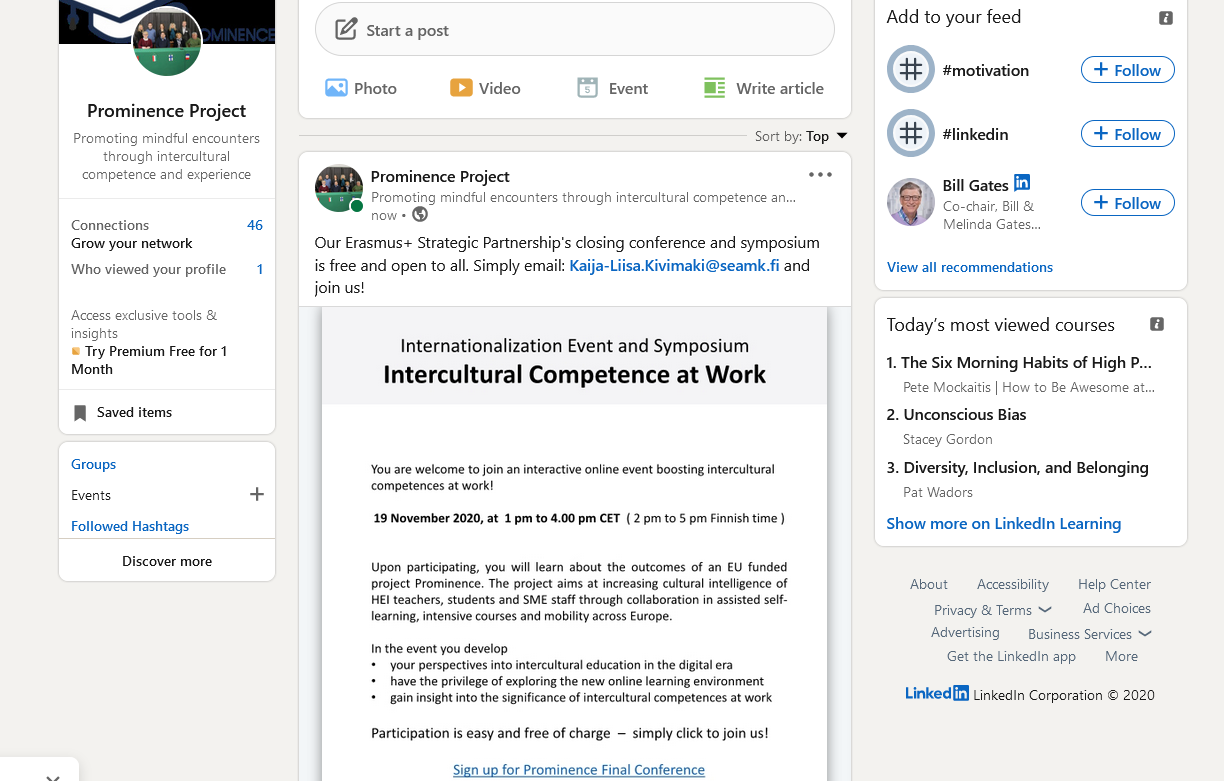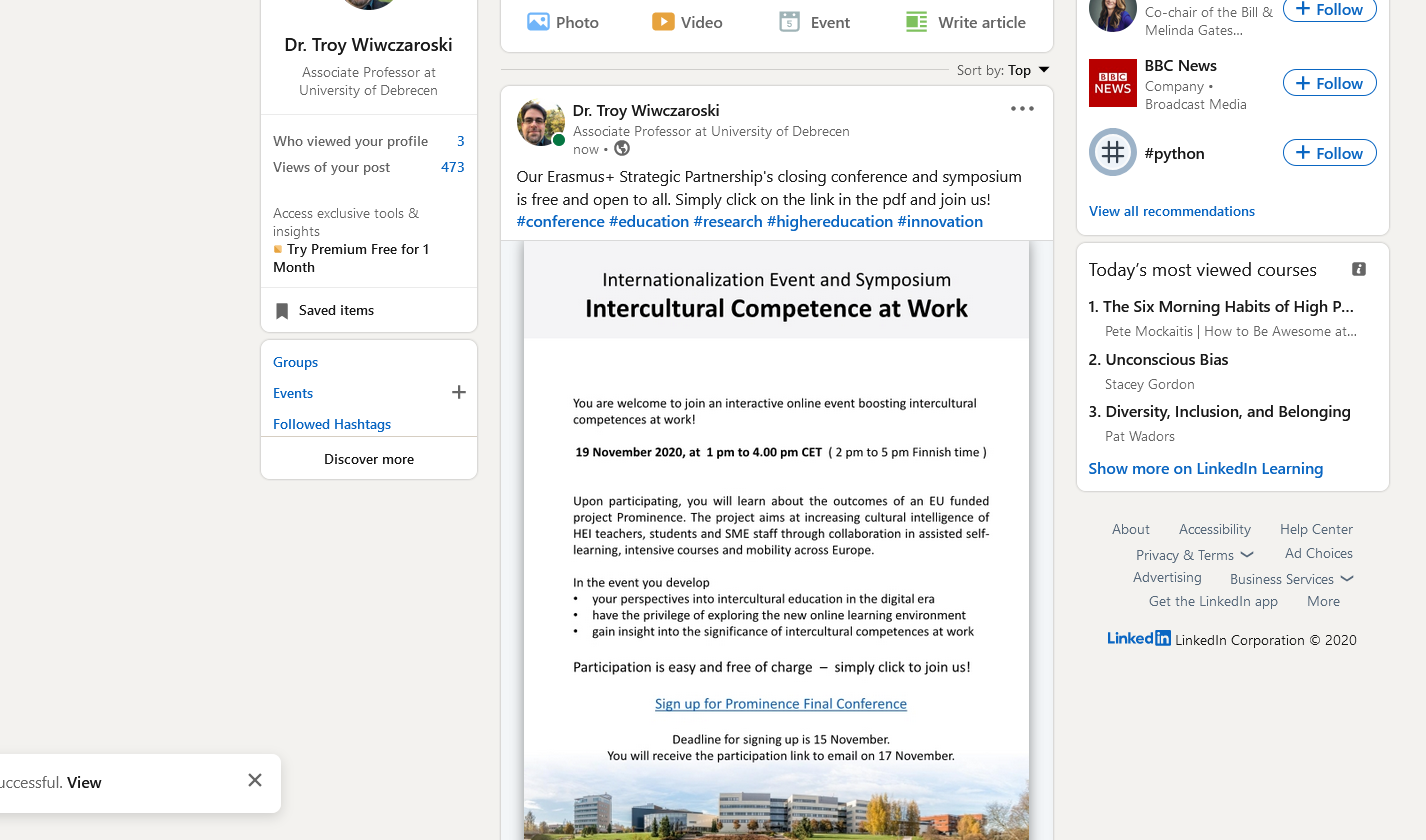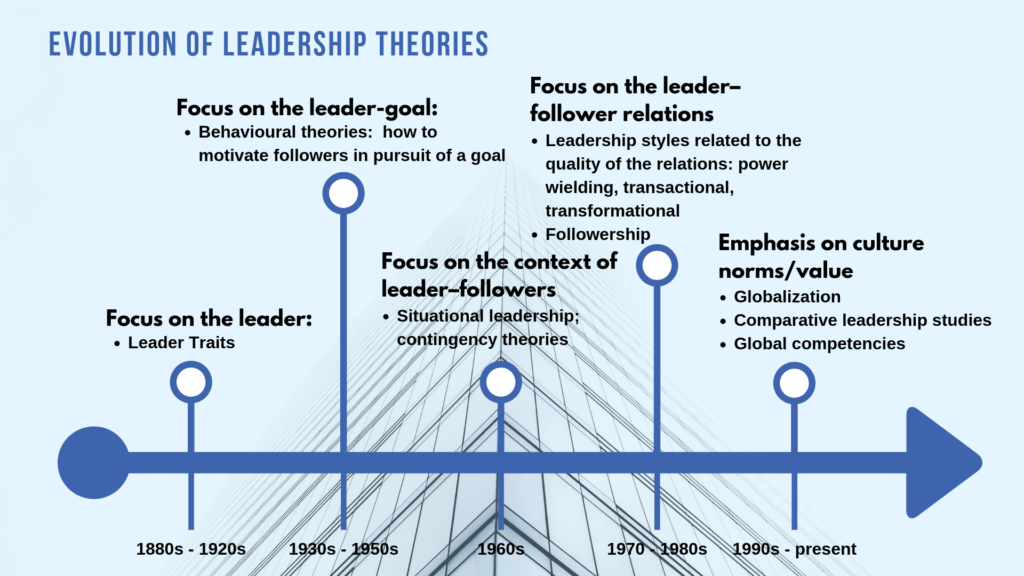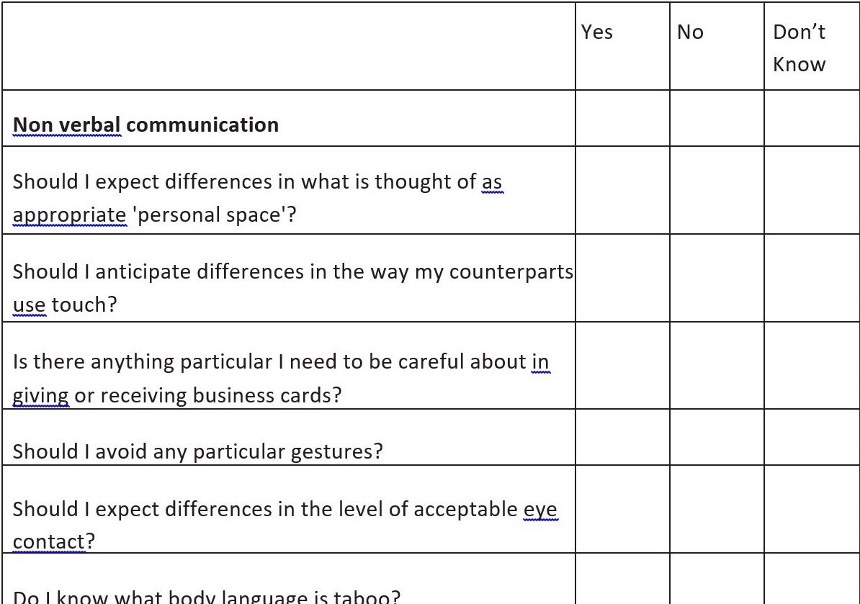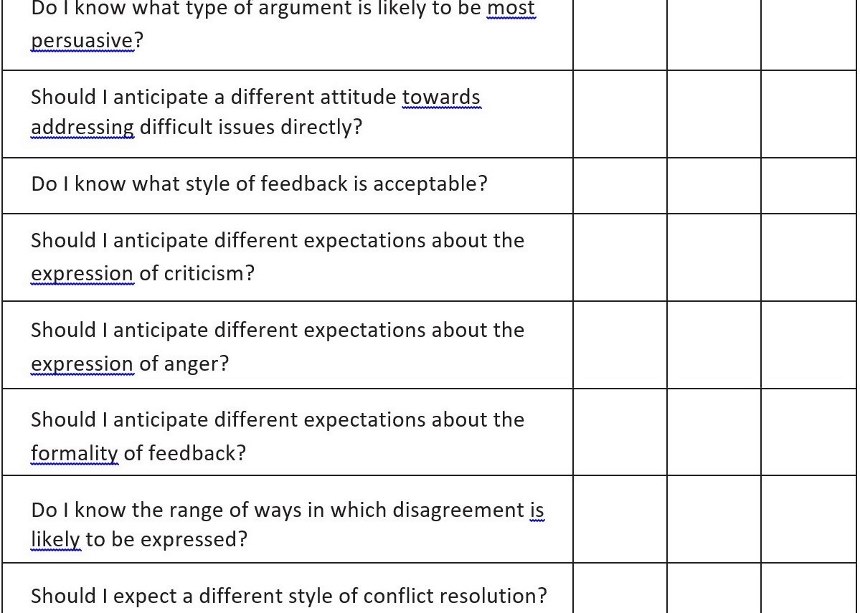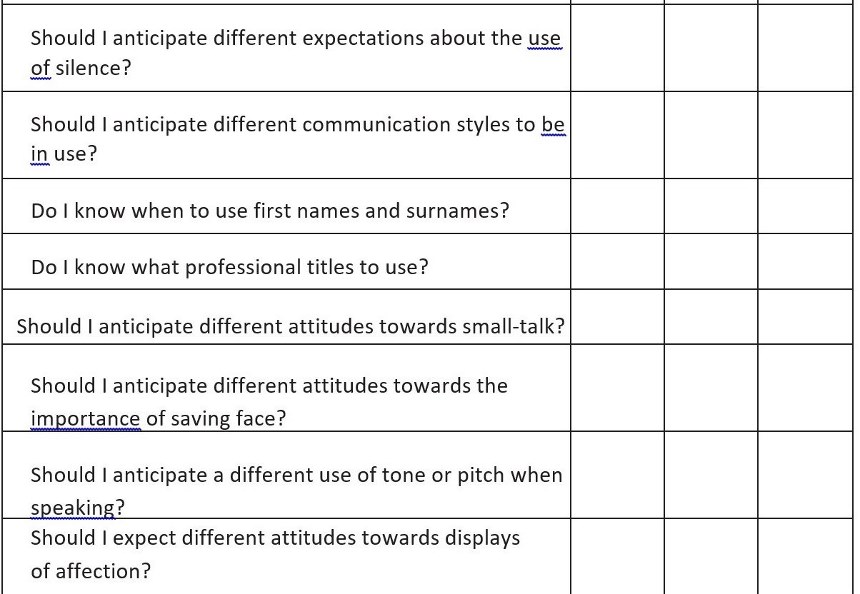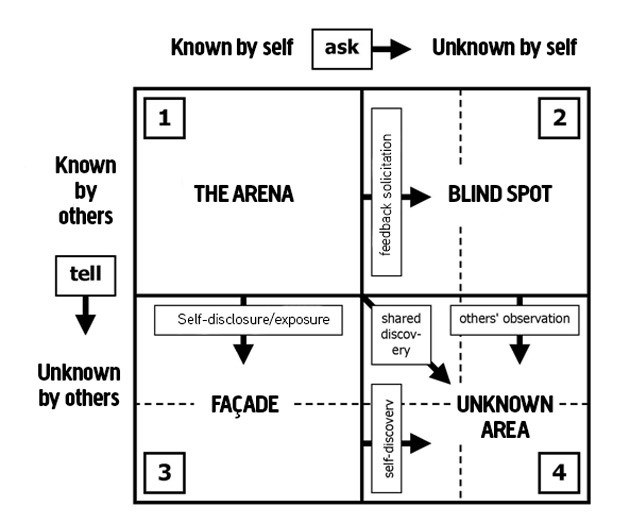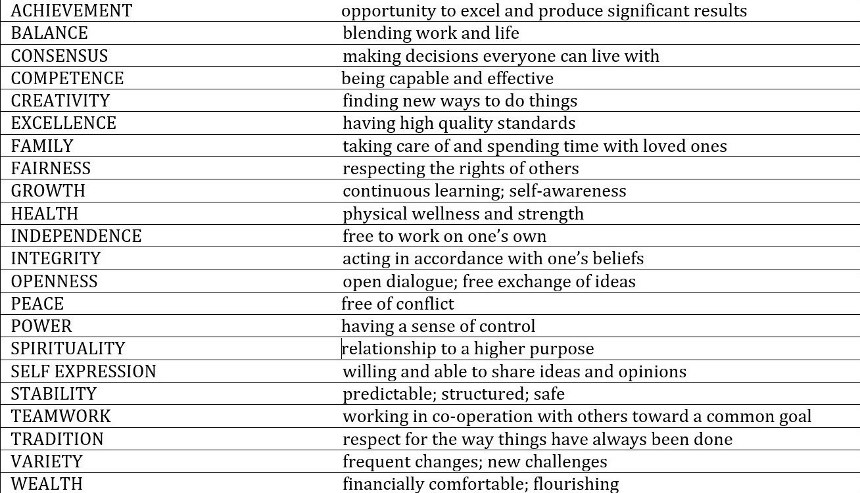learning outcomes
You will understand how culture influences human interaction.
You will understand cultural value dimensions to be able to predict human behaviour in the cultural context and to compare human behaviours across two or more cultures.
You will understand how central tendencies of a nation can be used as a starting point to understand cultural similarities and differences.
Table of Contents
- IDENTITY MAPPING
- LAYERS OF CULTURE
- PROVERBS AND CULTURE
- ERIN MEYER CULTURE MAP
- THE LEWIS MODEL
- GLOBALISATION AND CULTURAL DIFFERENCES
- National Culture Influences corporate culture
1. IDENTITY MAPPING
The Identity Negotiation Theory by Stella Ting-Toomey (1999) claims that individuals in all cultures desire to be competent communicators in a diverse range of interactive situations. The identity negotiation perspective emphasises eight identity domains in influencing an individual’s everyday interactions. The first four identity domains (cultural, ethnic, gender, and personal identities) are viewed as primary identities that exert an ongoing impact throughout our lives. The other four identity domains (role, relational, facework, and symbolic interaction identities) are situational identities and changeable from one situation to the next.
Identity negotiation in intercultural communication refers to the affirmation of identities individuals want others to recognise in them and the ascription of identities individuals assign to each other in intercultural encounters.
Study Task 1
- Create your own identity chart.
- Discover your individual cultural identity.
- Consider how you negotiate your identity with others.
2. LAYERS OF CULTURE
Layers of culture show the degree of visibility of the cultural phenomenon in a particular situation. Culture is often compared to an iceberg which has both visible (explicit) and invisible (implicit) parts (E. T. Hall, 1976). Explicit culture includes man- made material objects, symbols, heroes, rituals and etiquette, practices, habits, behaviour. Implicit culture includes norms, values and preferences, beliefs, and assumptions.
Study Task 2
- Think of the Explicit and Implicit Manifestations of Your Own Culture.
3. PROVERBS AND CULTURE
In nearly every culture, proverbs, communicated in colourful and vivid language, offer an important set of instructions for members to follow. Proverbs are short statements which encapsulate some of the key conceptions of common sense in different cultures and provide delicate insight into national assumptions and values.
Study Task 3
Explain how these proverbs reflect different values and life attitudes:
- From the perspective of uncertainty avoidance: Life should be a dance, not a race (Irish proverb).
- From the perspective of high-context and low-context: Silence is also speech (An African proverb).
- From the perspective of power distance: The eyes cannot rise above the eyebrow (Arab proverb).
Identify the cultural values expressed in the following proverbs.
- A single bracelet does not jingle (a Congo proverb).
- The squeaky wheel gets the grease (US proverb).
- God gave us the nuts, but he does not crack them (German proverb).
- To know the road ahead, ask those coming back (Chinese proverb).
- Fall seven times, stand up eight (Japanese proverb).
- A harsh word dropped from the tongue cannot be brought back by a coach and six horses (Chinese proverb).
4. ERIN MEYER CULTURE MAP
Erin Meyer’s (2014) book provides a brilliant guide to what all business leaders need to know in order to succeed in managing across the diverse cultural contexts of today’s workplace.Erin Meyer (2014) makes a distinction between two forms of trust: cognitive trust and affective trust.Cognitive trust is built through business interactions; whereas affective trust emerges from feelings of emotional closeness, empathy, or friendship. On the Trusting Scale, countries are rated from high-task based to high-relationship-based cultures.
Study Task 4
- Explain how trust is built across cultures. (e.g., read Chapter 6 from Erin Meyer’s (2014) Culture Map)
5. THE LEWIS MODEL
The Lewis Model is rooted in Edward T. Hall’s concepts of monochronic (attending to one thing at a time) and polychronic (attending to multiple things at the same time) cultures. Richard Lewis expanded these concepts to the broader ones of linear-active and multi-active, then added the new concept of reactive. Linear-active people are introvert, patient, mind their own business, like privacy, plan ahead methodologically, work fixed hours. They are dominated by timetables, get information from reference books, respect officialdom, separate the social from professional. Multi-active cultures are extrovert, talkative, do several things at once, work any hours. They change plans, are people-oriented and emotional, have unrestricted body language, interrupt frequently. Reactive cultures are introvert, patient, respectful, punctual, and work at flexible hours. They are people-oriented, protect the face of others, have a subtle body language, connect the social and professional.
Study Task 5
- Where does your culture belong on Richard Lewis’ model? (e.g., read Chapter 3 from When Cultures Collide (2006) by Richard D. Lewis.)
6. GLOBALISATION AND CULTURAL DIFFERENCES
The GLOBE project represents results from a twenty-year research program linking culture, leadership, and organisational effectiveness. GLOBE researchers conceptualised nine cultural dimensions, paying attention to Hofstede (1980), Trompenaars and Hampden-Turner (1997), and Inglehart, Basanet and Moreno (1998). The nine cultural dimensions include performance orientation, assertiveness, future orientation, humane orientation, institutional collectivism, in-group collectivism, gender egalitarianism, power distance, uncertainty avoidance.
Study Task 6
- Compare the GLOBE Confucian Asia cluster with the GLOBE Anglo cluster and highlight the main differences and similarities in the nine societal cultural practice dimensions.
7. National Culture Influences corporate culture
Fish Can’t See Water by Hammerich and Lewis (2013) offers a fresh approach to the effects of national culture on organisational culture that is applicable to any country in any region. It examines companies as such Toyota, Samsung, General Motors, Nokia, Walmart, Kone and British Leyland. It describes the origins and nature of the most common corporate crisis and how culture impacts the response to such a crisis.
Study Task 7
- Explain how nation-state traits affect corporate cultures in the USA, Japan, and the United Kingdom Read. (e.g., read Chapter 3 from Fish Can’t See Water (2013) by Hammerich and Lewis.


